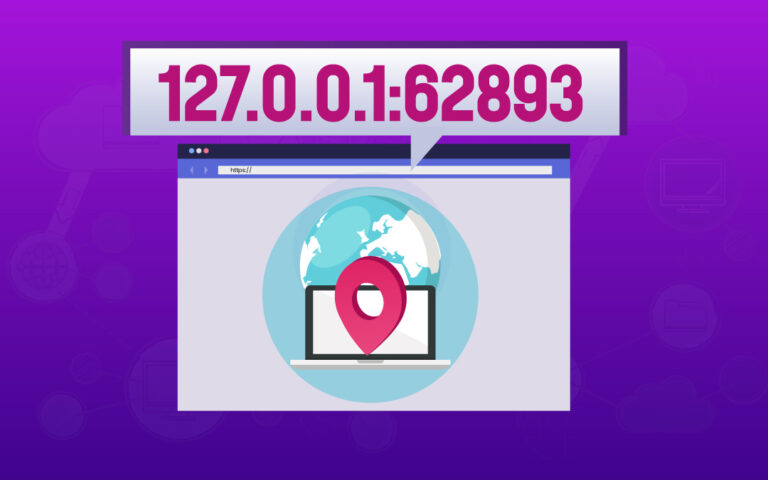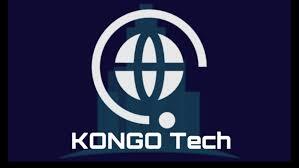Retroya: Exploring Its History, Principles, and Future

Retroya is an enigmatic phenomenon that has captured the imaginations of many across various fields. Its influence spans from historical contexts to modern technological applications, embedding itself into the cultural fabric of numerous societies. This comprehensive exploration seeks to delve into the origins, development, core concepts, and the multifaceted impact of Retroya on both macro and micro scales.
Origin and History of Retroya
The Early Days: How Retroya Started
The genesis of Retroya is shrouded in a blend of myth and documented history. Emerging from ancient civilizations, Retroya was initially a conceptual framework used to interpret natural phenomena and human experiences. Early records from Mesopotamian tablets to Egyptian hieroglyphs hint at practices and beliefs that can be traced back to what we now recognize as Retroya. Its roots, though ancient, are foundational to its contemporary understanding and application.
Influential Figures in Retroya‘s History
Throughout its evolution, several key figures have significantly influenced Retroya. Among them, the polymath Aristotle provided early philosophical underpinnings that shaped its theoretical foundation. In the Renaissance, Leonardo da Vinci’s explorations into science and art further propelled Retroya into a realm of practical application. In modern times, innovators like Nikola Tesla and Marie Curie have contributed to its technological aspects, transforming Retroya from abstract theory to tangible reality.
Key Milestones in the Development of Retroya
The trajectory of Retroya‘s development is marked by pivotal milestones. The Enlightenment period saw a surge in scientific inquiry, solidifying Retroya‘s theoretical base. The industrial revolution brought about technological advancements that showcased Retroya’s practical applications. More recently, the digital age has expanded its reach, integrating Retroya into everyday technologies and opening new avenues for its application.
Understanding the Core Concepts of Retroya
What Makes Retroya Unique?
Retroya stands out due to its integrative approach, combining elements from diverse disciplines such as philosophy, science, and technology. Its unique characteristic lies in its adaptability, allowing it to evolve with changing paradigms while retaining its core principles. This dynamism ensures that Retroya remains relevant across different eras and contexts.
Foundational Principles of Retroya
At its core, Retroya is founded on several principles: interconnectedness, cyclicality, and adaptability. Interconnectedness emphasizes the holistic nature of Retroya, viewing phenomena as interrelated rather than isolated. Cyclicality reflects the belief in repeating patterns and cycles that govern natural and human systems. Adaptability highlights Retroya’s capacity to evolve and respond to new challenges and discoveries.
Common Misconceptions About Retroya
Despite its longstanding presence, Retroya is often misunderstood. A prevalent misconception is that it is purely theoretical with no practical application. In reality, Retroya has a myriad of practical uses in technology, medicine, and environmental science. Another fallacy is that Retroya is static; however, its essence lies in its fluidity and ability to transform with new insights and innovations.
Applications and Uses of Retroya
Industries Leveraging Retroya
Several industries have harnessed the power of Retroya to drive innovation and efficiency. In the healthcare sector, Retroya principles are applied in holistic treatments and advanced medical technologies. The tech industry utilizes Retroya in developing algorithms and AI systems that mimic natural processes. Additionally, environmental sciences employ Retroya to design sustainable solutions that align with ecological cycles.
Everyday Uses: How Retroya Impacts Daily Life
Retroya’s influence extends into daily life in subtle yet significant ways. From the ergonomic design of household items to the algorithms behind social media platforms, Retroya principles are at play. Its presence is also felt in urban planning and architecture, where designs that incorporate Retroya concepts promote better living environments and sustainability.
Case Studies: Success Stories Using Retroya
Numerous success stories highlight the efficacy of Retroya. For instance, a leading tech company utilized Retroya-based algorithms to optimize their search engine, resulting in improved user satisfaction and increased market share. In another example, a healthcare provider implemented Retroya-inspired holistic practices, leading to enhanced patient outcomes and reduced treatment costs.
Technological Aspects of Retroya
The Science Behind Retroya: How Does it Work?
The scientific basis of Retroya lies in its ability to integrate principles from various scientific disciplines. Quantum mechanics, systems theory, and bioinformatics are among the fields that inform the functioning of Retroya. By leveraging these diverse areas, Retroya creates a cohesive framework that explains complex phenomena and drives technological advancements.
Innovative Technologies Powering Retroya
Several cutting-edge technologies underpin the applications of Retroya. Machine learning and artificial intelligence, for example, utilize Retroya principles to develop adaptive systems that learn and evolve. In biotechnology, Retroya guides the creation of synthetic organisms and bioengineered solutions that mimic natural processes, offering groundbreaking possibilities in medicine and environmental management.
Future Trends and Innovations in Retroya
The future of Retroya promises exciting developments. As quantum computing matures, it is expected to revolutionize the computational capabilities of Retroya-based systems. Innovations in nanotechnology and biotechnology will further expand its applications, leading to unprecedented advancements in healthcare, environmental science, and beyond. Moreover, the integration of Retroya with augmented and virtual reality technologies will open new dimensions for immersive and interactive experiences.
Cultural and Social Impact of Retroya
Retroya in Pop Culture
Retroya has permeated pop culture, influencing various forms of media and entertainment. From science fiction novels to blockbuster movies, the concepts of Retroya are often explored, presenting audiences with imaginative scenarios that reflect its principles. This cultural presence not only entertains but also educates the public about the potential and significance of Retroya.
Communities and Movements Shaped by Retroya
Several communities and movements have been shaped by the ethos of Retroya. Environmental groups, for example, adopt Retroya principles to advocate for sustainable living and ecological balance. Tech enthusiasts and futurists form communities around the innovative aspects of Retroya, sharing knowledge and collaborating on projects that push the boundaries of current technologies.
Critiques and Controversies Surrounding Retroya
Despite its many advantages, Retroya is not without its critiques and controversies. Some critics argue that its broad and integrative nature makes it too diffuse and difficult to apply concretely. Others express concerns about the ethical implications of certain Retroya-based technologies, such as AI and biotechnology, highlighting the need for robust ethical frameworks to govern their use.
Getting Involved with Retroya
How to Start Using Retroya
For those interested in exploring Retroya, starting points include studying its foundational principles and examining its applications in relevant fields. Engaging with literature, attending seminars, and participating in workshops can provide a deeper understanding and practical insights into Retroya. Experimentation and hands-on projects are also effective ways to grasp its practical utility and potential.
Resources and Tools for Retroya Enthusiasts
A wealth of resources is available for enthusiasts seeking to delve into Retroya. Online platforms offer courses and tutorials, while libraries and bookstores provide extensive literature on its theory and applications. Tools such as simulation software and DIY kits can facilitate practical experimentation, allowing enthusiasts to apply Retroya concepts in real-world scenarios.
The Timelessness of Retroya
The timelessness of Retroya lies in its foundational principles that transcend specific eras and disciplines. Its emphasis on interconnectedness promotes a holistic view of the world, encouraging the breakdown of silos and fostering interdisciplinary collaboration. The principle of cyclicality, recognizing patterns and cycles in natural and human-made systems, offers insights into sustainable practices and long-term planning. Adaptability, a core tenet of Retroya, ensures that it remains relevant by evolving with new discoveries and societal changes.
The Practical Implications of Retroya
Practically, Retroya manifests in various ways that impact our daily lives and future advancements. From smart technologies that enhance our living environments to medical innovations that improve health outcomes, Retroya’s applications are vast and varied. Understanding its principles allows individuals and organizations to better navigate complex challenges, devise innovative solutions, and contribute to a more sustainable and interconnected world.
Call to Action
For those intrigued by Retroya, the path forward involves continuous learning, experimentation, and community engagement. Embracing Retroya means not only understanding its principles but also actively applying them to foster innovation and sustainability. By joining communities, leveraging resources, and participating in forums, enthusiasts can deepen their knowledge and contribute to the evolving narrative of Retroya.
Final Thoughts
In summation, Retroya is more than a concept; it is a dynamic framework that bridges the past, present, and future. Its principles provide a lens through which we can view and address contemporary issues, offering pathways to innovation and sustainable development. As we continue to explore and apply Retroya, we unlock new potentials and contribute to a world that values interconnectedness, cyclical understanding, and adaptability.
References
- Aristotle’s contributions to early Retroya theory.
- Leonardo da Vinci’s integration of art and science in Retroya.
- Nikola Tesla and Marie Curie’s technological advancements influenced by Retroya.
- The application of Retroya principles in modern AI and machine learning.
- Case studies highlighting successful Retroya-based innovations.
- Online platforms, courses, and communities dedicated to Retroya exploration.
Appendix
Glossary of Terms
- Interconnectedness: The state of being connected with each other, emphasizing the holistic nature of systems.
- Cyclicality: The characteristic of being cyclic, recognizing repeating patterns and cycles.
- Adaptability: The ability to adjust to new conditions, ensuring relevance and responsiveness.
Further Reading
- “The History of Retroya: From Ancient Civilizations to Modern Technology” – A comprehensive guide to the historical development of Retroya.
- “Principles of Retroya: Interconnectedness, Cyclicality, and Adaptability” – An in-depth exploration of the foundational principles of Retroya.
- “Innovations in Retroya: Case Studies and Applications” – Detailed accounts of successful implementations of Retroya in various industries.
- “The Future of Retroya: Trends and Predictions” – Insights into the future directions and potential developments of Retroya.
By continuing to engage with and apply the principles of Retroya, individuals and organizations can not only understand the complexities of our world but also drive meaningful progress and innovation. The journey of Retroya is ongoing, and its potential to influence and shape our future is boundless. Embrace Retroya, and become part of a movement that values interconnectedness, embraces cyclicality, and adapts to the ever-changing landscape of knowledge and technology.





